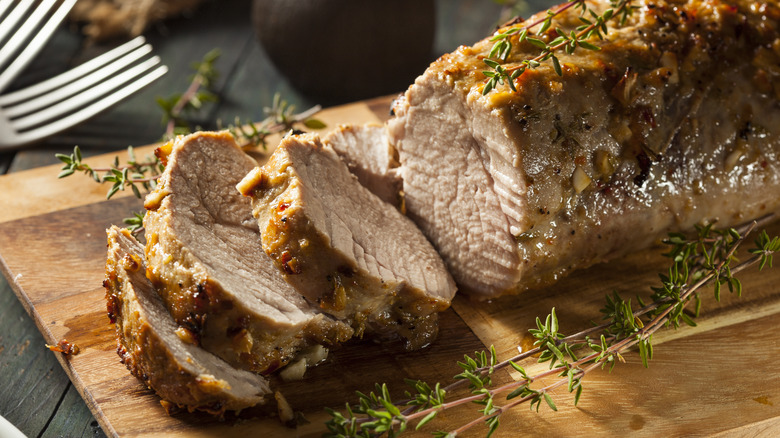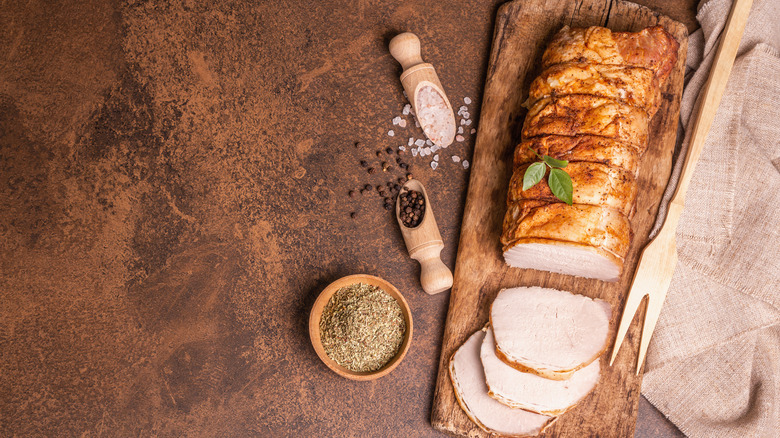How To Cook A Juicy And Tender Pork Tenderloin In An Air Fryer
With a delicate taste and texture, pork tenderloin is one of the most beloved cuts from a pig. A cornerstone of a number of meals, cooking simple roasted pork tenderloin is straightforward, especially in the air fryer. However, there are a few tips and tricks to help this meat live up to its name.
Though pork tenderloin is known for its suppleness, it tends to dry out easily. It's one of the leaner cuts, which means it doesn't take much to go from the tender piece of meat we know and love to something completely devoid of moisture. So to keep your pork tenderloin juicy make sure it doesn't go above an internal temperature of 145 degrees Fahrenheit, since overcooking it is one of the biggest culprits for drying it out.
Before air frying pork tenderloin, it's also important to remove the silver skin — otherwise, the outside will end up chewy. As you do this, preheat the air fryer to 400 degrees Fahrenheit. This higher temperature cooks the meat quickly, leaving it with a perfectly browned crust. You can also cut the pork tenderloin in half to speed up the process which should be done within 20 minutes.
These tips will elevate your air-fried pork tenderloin
Aside from the moist interior, one of the best parts of pork tenderloin is the crispy crust. Although we're big fans of wet brining, dry brining makes the skin tremendously crisp while producing juicy meat. The salt in the brine breaks down the protein of the pig, helping to keep its moisture intact. For a caramelized crust, a brown sugar brine is all you need for perfectly flavored pork chops and it works wonders for tenderloin too.
The sugar caramelizes first, ensuring that the crust maintains a rich flavor and texture. You can brine the pork tenderloin then move it to the air fryer right away but for best results, sear it on the stove first which creates a more even crust. To prevent it from overcooking, don't keep it on the stove for too long. If you sear the meat first, cook it in the air fryer at around 300 degrees Fahrenheit so the moisture isn't zapped.
Whichever technique you decide to employ, using this handy cooking device will take less time than traditional methods and impart just as much delicious flavor, leaving you with a tender interior.

